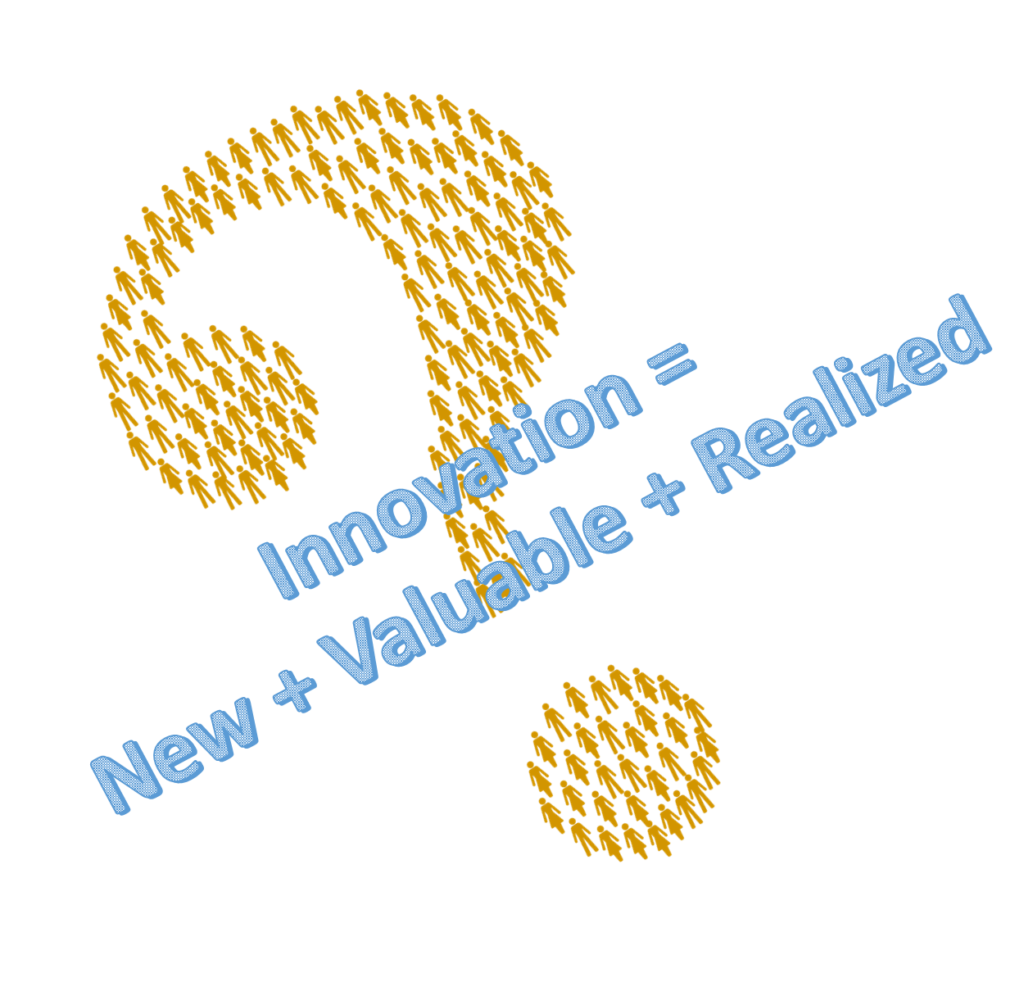Asking questions is one of the traits that makes humans an interesting and creative species. Kevin Kelly (@kevin2kelly), founding Executive Editor of Wired magazine, insists there has never been a more important time in history to ask good questions because artificial intelligence has made getting answers cheap. He writes, “We can expect future technologies such as artificial intelligence, genetic manipulation and quantum computing (to name a few on the near horizon) to unleash a barrage of new huge questions we could have never thought to ask before. In fact, it’s a safe bet that we have not asked our biggest questions yet.”[1] Because artificial intelligence has the potential to make answers cheap, the value of questions is only going to climb. Alan Gershenhorn (@AlanGershenhorn), Executive Vice President and Chief Commercial Officer for UPS, believes some of the most important questions organizations should ask begin with “what if.”[2] He notes that the rise of the internet initiated “a massive exercise in ‘What if?’ that has disrupted whole industries.” Today’s emerging technologies, including cognitive computing and digitization, require a lot more good questions to inspire tomorrow’s innovations. Gershenhorn insists, “If an organization asks ‘What if?’ enough — and empowers its people to act on the ‘What ifs?’ — it will discover new opportunities and new possibilities.”
Curiosity Spurs Questions
Curiosity may have killed the cat, but, it’s essential for innovation. Katherine Graham-Leviss, founder and president of XBInsight, believes one of the most important traits an innovative leader can possess is curiosity. She explains, “They exhibit an underlying curiosity and desire to know more. These leaders will actively take the initiative to learn new information, which demonstrates engagement and loyalty to company goals. Keeping their skills and knowledge current gives them the competitive edge they need to lead effectively, and also stimulates new ways of thinking in other workers.”[3] Curiosity enjoys a symbiotic relationship with asking questions and a curious leader encourages those he leads to ask questions as well. Graham-Leviss notes, “The CEOs who are most likely to lead innovation are driving, high-impact individuals, who aren’t afraid to be assertive, independent, and above all, curious.”
Innovation experts Olivia Fox Cabane (@foxcabane) and Judah Pollack (@JudahThinks) assert, “At the heart of any successful business is a great idea.”[4] Discussing Cabane’s and Pollack’s latest book, The Net and the Butterfly: The Art and Practice of Breakthrough Thinking, Melody Wilding (@MelodyWilding), an adjunct instructor at City University of New York, writes, “They say there’s a way to systemically tap cognitive processes that generate insights. It comes down to stimulating associative thinking, a process in which the brain pieces together disparate information to solve problems in unique ways using skills like questioning, observing, networking, and experimenting.”[5] In other words, it’s a way to tap curiosity. Cabane and Pollack suggest there are seven questions innovators tend to ask and answer (and those seven questions can be remembered using the mnemonic LUMIAMI). They are:
1. LOOK. “What could you look at in a new way? Can you reverse a perspective, take a 30,000-foot view, or even ignore something you know to be true?”
2. USE. “What could you use in a new way, or for the first time? Think about ways to substitute your product or service in place of something else, for example.”
3. MOVE. “What could you move — changing its position, frequency, or speed? If you’ve been incubating an idea internally, consider how you might expose it to people outside your company. For products, think about importing features from other industries.”
4. INTERCONNECT. “What could you interconnect, for the first time or in a new way? What could you combine or connect to make the concept more powerful? What new groups or partners could you expose the idea to?”
5. ALTER. “What could you alter, in terms of design and performance? Explore how you could standardize processes. Look for ways to create a novel look and feel.”
6. MAKE. “What can you make that is truly new? This is hard, because these days it seems like there is nothing unique under the sun. However, try to think about what new meaning you might be able to create or infuse your innovation with. Is there a way to make something that already exists more specialized and focused?”
7. IMAGINE. “What can you imagine that would create a great experience for someone? Look at ways to simplify the buying process, for example.”
Wilding adds, “While there’s no guarantee answering these questions will transform you into the next Steve Jobs or Elon Musk, they provide a helpful framework for getting unstuck.” At the very least, asking these questions will make you more curious.
Innovation means Implementation
My preferred definition of innovation is found in the innovation formula, which is: innovation = new x valuable x realized. The bottom line is that an idea is not innovative unless it is implemented. Coming up with new ideas is often easier than implementing them. Tendayi Viki (@tendayiviki), founder and principal consultant at Benneli Jacobs, suggests asking questions can also help with innovation’s implementation phase. “It is helpful,” he writes, “to think of searching [for the right business model or path to implementation] as a process for answering a hierarchy of key business model questions.”[6] Although he admits there may be a number of good questions that need to asked, he suggests six. They are:
1: CAN IT BE DONE? “This question speaks to the technical risks in any project. Will we be able to create whatever breakthrough we are imagining?”
2: SHOULD IT BE DONE? “Even if we solve for the technical risks, is there anybody in the real world who cares about the product?”
3: HOW SHOULD IT BE DONE? “A lot of smart innovators fail at this stage. They have discovered a customer need that is facing a good market. They also have a great piece of technology that can solve the problem. However, when they start developing their product they do so without involving the customer. This often results in ‘clever products’ that nobody knows how to use.”
4: WHEN SHOULD IT BE DONE? “To what extent does your product’s success depend on the successful commercialization of other companies innovations? To what extent do you need key partners to adopt your innovation before customers can fully experience the value proposition? Innovators who have ignored these questions have failed by being ‘too early’.”
5: CAN IT BE DONE PROFITABLY? “Where will we create and deliver value? How will we reach customers to tell them about our product and/or deliver it to them? How much will it cost us to create and deliver value? How much will customers pay? How will we get to break-even or profitability? The answers to these questions are key to the survival of our product in the market.”
6: CAN IT BE DONE AT SCALE? “Finding a real customer need is not that same thing as finding a market. It is important to ensure that the customer need we have identified represents a large enough market for us to make profits. However, finding a great market does not automatically mean we will succeed at scale.”
Viki concludes, “Ignoring one or two of these questions can place our breakthrough product ideas at risk.”
Summary
Asking questions is important throughout the innovation process. Looking again at the innovation formula (innovation = new x valuable x realized), most people understand the importance of questions when coming with something new. Some of the questions suggested by Viki help determine whether something is valuable and others help determine whether it can be realized. From beginning to end, asking and answering the right questions will help ensure great ideas become great innovations.
Footnotes
[1] Kevin Kelly, “With AI, Answers Are Cheap, But Questions Are The Future,” General Electric, 6 March 2017.
[2] Alan Gershenhorn, “How Asking ‘What If?’ Will Lead Us to Tomorrow’s Innovations,” Yahoo News, 2 September 2016.
[3] Katherine Graham-Leviss, “The 5 Skills That Innovative Leaders Have in Common,” Harvard Business Review, 20 December 2016.
[4] Melody Wilding, “7 Questions That Lead to an ‘Aha Moment’, According to Research,” Inc., 24 April 2017.
[5] Ibid.
[6] Tendayi Viki, “Innovation Teams Must Answer These Six Questions Before Launching A Product,” Forbes, 30 April 2017.





